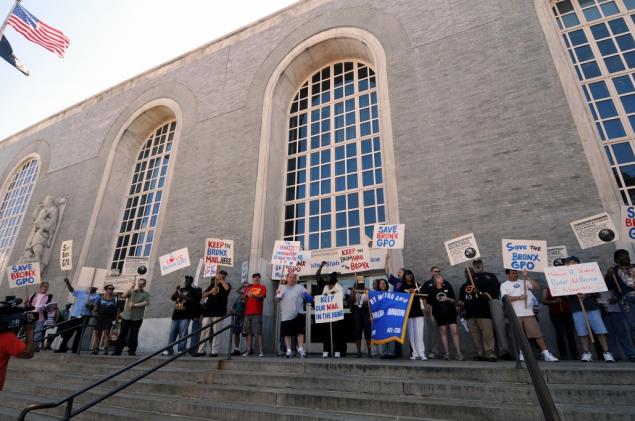 An article published in the Washington Post earlier this week highlights the dramatic decline of the United States Postal Service and the financial difficulty that it is facing today. Since the passing of the Postal Accountability and Enhancement Act (PAEA) in 2006, the postal service has started running massive deficits has been forced to lay off tens of thousands of workers. To remedy this financial mess, the USPS has increasingly started to sell historic Post Office buildings, often centrally located on valuable tracts of land, to raise money.
An article published in the Washington Post earlier this week highlights the dramatic decline of the United States Postal Service and the financial difficulty that it is facing today. Since the passing of the Postal Accountability and Enhancement Act (PAEA) in 2006, the postal service has started running massive deficits has been forced to lay off tens of thousands of workers. To remedy this financial mess, the USPS has increasingly started to sell historic Post Office buildings, often centrally located on valuable tracts of land, to raise money. The effects of this fire sale of Post Office facilities are significant because the buildings often provide immense cultural and historical value to their communities. These buildings are not just critical for the day-to-day functions of the Post Office. They are traditionally some of the oldest structures in their respective areas, with historically important architecture that can tell the story of their communities. Almost every major city has a historic USPS building, and many are home to important murals or other pieces of art as well. In 2012, the National Trust of Historic Preservation listed U.S. Post Office buildings as a category in their annual list of America’s most endangered historic places.
Currently there are laws in place that require Federal buildings, including post offices, to study the environmental impacts of the sale of their buildings. Community impacts are meant to be included in this study as well, where residents in the immediate neighborhoods of the buildings are allowed to have their voices heard on the subject. While the USPS is fighting for their right to sell the buildings to whoever is the highest bidder, legislators are trying to strengthen the requirement that the USPS listen to community input before the sale can be finalized. Historic preservation organizations hope to encourage the USPS to sell to bidders who pledge to keep the architectural and cultural integrity of the buildings intact, such as museums or community centers.
Historic structures and cultural institutions like the USPS buildings have the power to revitalize downtowns, foster neighborhood pride that promotes community connectedness, and educate residents on the history of the area in which they live. In communities both large and small, they are traditionally invaluable cultural assets and protecting them can provide a number of benefits.
To read the Washington Post article about the Bronx Historic Post Office, click here.